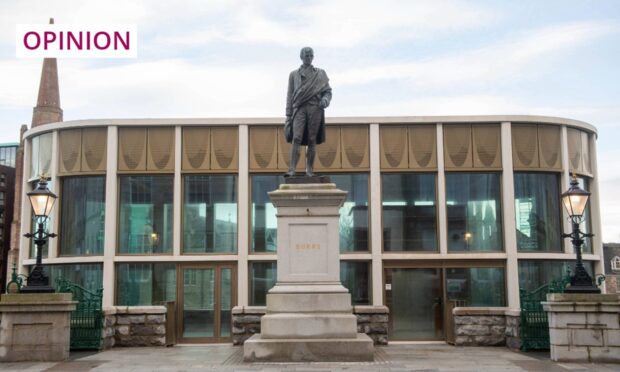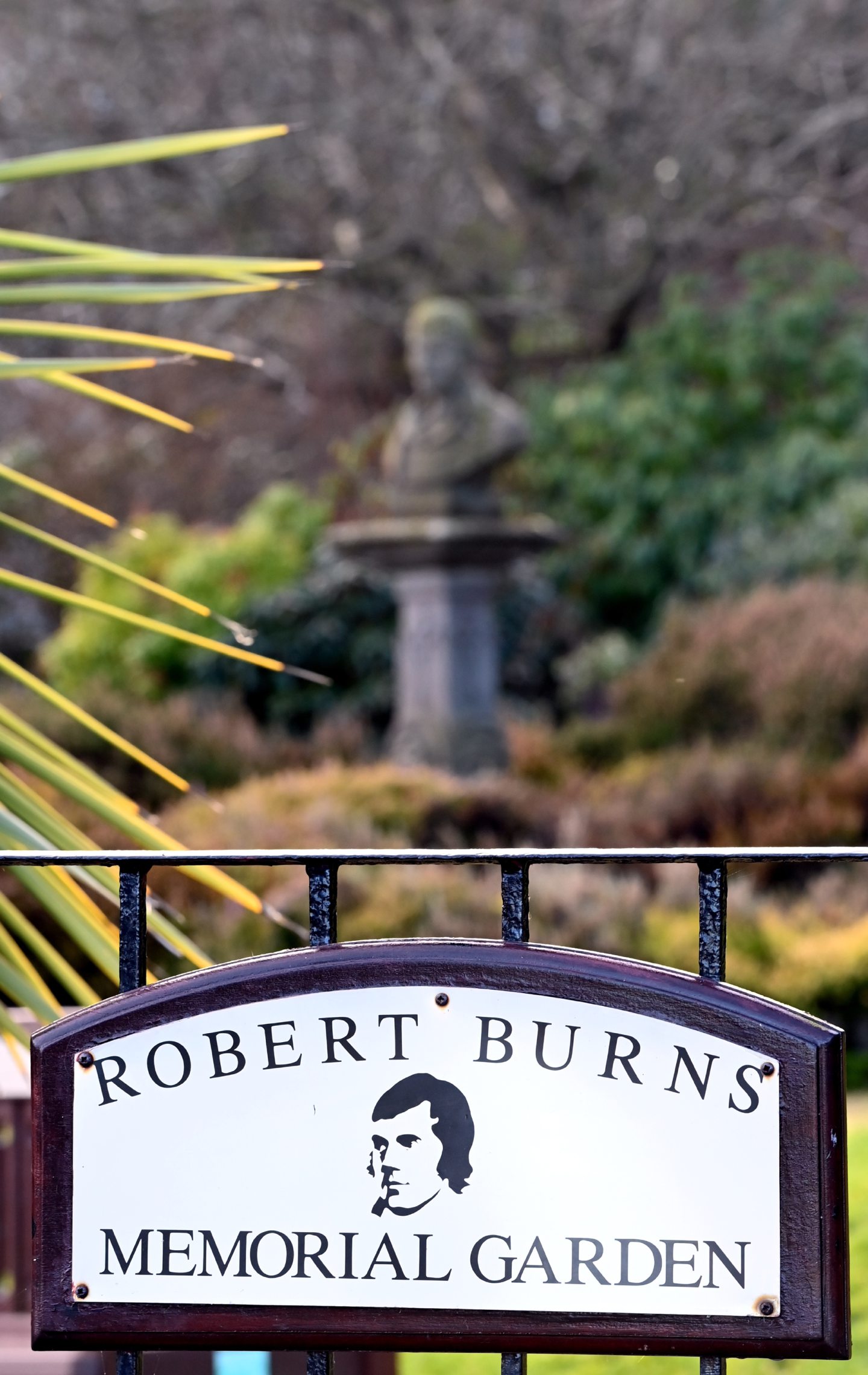It is the time of year again when the entire globe bows down to the talent of Robert Burns, the cultural icon known as “the heaven-taught ploughman” to some, and to others, including poet Liz Lochhead, a slightly dubious “sex pest”.
I confess, I find Rabbie’s bawdy bad-boy behaviour problematic. But, to be fair, he hasn’t been the only creative to have a troubled personal life.
You might think of Scotland’s bard as being inextricably linked with Alloway or Dumfriesshire. But, actually, the north-east has a small claim to him.
Burns’s father was born at either Clochnahill Farm, Dunnottar or Upper Kinmonth, and then trained as a gardener at Inverugie Castle in Aberdeenshire. It was only later that he moved to Ayrshire, married Agnes Broun and became a tenant farmer. The rest, as they say, is history.
Rabbie Burns returned to the north-east in 1787, visiting Duff House and Banff, where he was inspired to write MacPherson’s Farewell, about a celebrated rascal he had heard of from locals there. I like to imagine that Rabbie’s love of the Scots language, in some small part, came from his father’s Doric roots.
It would appear that Rabbie can do no wrong; his place in Scottish culture and the significance with which he is regarded around the world is sacrosanct and untouchable. Female writers Janette Ayachi, Victoria McNulty, Susi Briggs and Morag Anderson discovered this last year, when they were commissioned to write creative responses by the Scottish Poetry Library.
The Trysting Thorns, as they named themselves, examined his work, life and legacy in new works which gave an imagined vocal response from some of the women in the bard’s life. Burns fans robustly leapt to his defence, aggrieved by their temerity to tarnish his reputation, despite plenty of good evidence to the contrary.
I don’t believe for a second that Burns would want to be remembered as a perfect, rose-tinted romantic. Just reading his words, I visualise him full of life and charismatically holding court. Buoyed by booze and bravado, rowdily playing to the assembled room, energised and utterly unstoppable, with words and droplets of spit dancing from his lips.
In life, he spoke his mind or told uncomfortable truths, so I think his shoulders are broad enough to withstand a little personal criticism from beyond the grave. But is it fair to castigate someone’s actions from a different time?
As Burns Night approaches, I want to haul him into the present day – to reimagine what our ploughman poet would be up to if he was alive now.
If he had remained shackled to the land as a farmer, instead of finding fame through poetry, would he be an impassioned regenerative farmer, working the land in harmony with nature, supporting a no-dig approach? Alternatively, he might have become a fervent environmentalist, championing Scotland’s natural world of capercaillies, Caledonian forest and wild cats.
A surprisingly modern man?
Burns managed to pack a lot into his 37 years. He fathered 12 children by four different women, seven illegitimately. Even by today’s more liberal standards, that has the power to raise an eyebrow in polite social circles. But he’s not the only celebrity to have an eye for the ladies; both Mick Jagger and Mel Gibson can top his tally.
At the Globe Inn, his favourite howff in Dumfries, Burns used to read aloud to an eager audience hanging on his every word. So, perhaps his thirst for adulation could have made him a social influencer, chasing followers, engagement and hearts alike.
I wonder what his take on sexual equality would be, having written The Rights Of Woman in 1792, in which he argued for a woman’s right to protection, decorum and admiration.
When you dive into A Man’s A Man For A’ That and Holy Willie’s Prayer, you’ll find his razor-sharp observations on politics, poverty, hypocrisy
But I suspect this largesse was more of an attempt to woo the London actress who had caught his eye and who he hoped to impress.
No matter what century he lived in, I am certain Burns’s love of the Scots language and music would endure. Perhaps he’d replace traditional stanzas with a more modern rhyme and poetry.
When you dive into A Man’s A Man For A’ That and Holy Willie’s Prayer, you’ll find his razor-sharp observations on politics, poverty, hypocrisy, class inequalities, self-determination, and Scottish cultural identity. These are still topics which inspire Scottish rappers.
An inevitable fall from grace
Rabbie was not a fan of power and privilege, so perhaps a career in politics at present-day Holyrood would be apt. Sadly, I fear whatever social injustices he righted would be undone by an inevitable fall from grace.
However much I appreciate Robert Burns as a poet and lyricist, and a champion of the Scots language, my sympathies will always lie with the many women he left in his misogynistic wake.
I can only wonder at the seas of tears that the likes of Elizabeth Paton, Jean Armour, Mary Campbell, Agnes Maclehose, Jenny Clow and Anna Park cried over this flawed man’s behaviour towards them. Imagine what these women could have achieved if they lived in our time, with education, greater equality and birth control.
Catriona Thomson is a freelance food and drink writer


Conversation